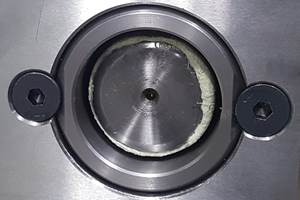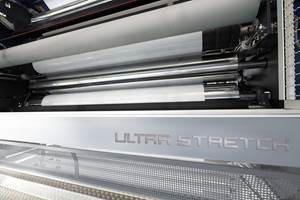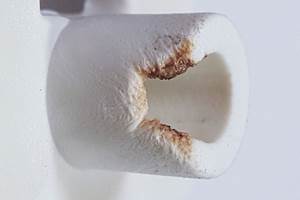Injection Molding Know-How: The ABCs of Delta P: Setting the First-Stage Pressure Limit
Here’s another trick of the trade that will make your life easier.
Here’s another trick of the trade that will make your life easier. The subject is viscosity and the fact that plastic changes viscosity in processing, and if you change injection speed, viscosity changes big-time. Many of you have seen or worked with this in the form of a viscosity curve (see illustration).
To control your process you have to control injection velocity or fill time, and the tolerance is especially tight. Fill time must be kept to ±0.04 sec, because polymer viscosity is so sensitive to shear rate. Sorry, no arguments here: You must control fill time to keep your parts consistent shot to shot, run to run, machine to machine. Setting up a process so that the machine (rather than you) controls fill time will make your life on the shop floor easier. You might just get to eat lunch and go home on time, not to mention making higher-quality parts with less scrap.
If the strategy is to control fill time to ±0.04 sec, how do we do it correctly and safely? To control speed in a car you need to have more power available than what you are currently using. If you are going up a steep hill on cruise control, you need enough power from the engine to maintain the 70 mph you want. The same concept applies to controlling first-stage filling on an injection machine, but with one difference: If you apply too much power (pressure), you can damage a slide or other delicate part of a mold. In the case of a multi-cavity tool, there is the chance that a cavity will accidentally block and you could be trying to push four cavities worth of plastic into three. Remember that the first stage (filling), with the hold pressure set near zero, should only make a short shot.
Whether your machine is electric or hydraulic, closed or open loop, it doesn’t matter—to keep fill time constant while running requires that extra pressure be available. This is the “Delta P,” the pressure difference between what was used and what pressure was available.
As viscosity varies due to different resin lots, colors, regrind percentages, or moisture content, you want the machine to adjust for viscosity changes so you do not have to. If the machine has enough extra pressure and the new batch of resin is stiffer, it will use more pressure, like a car climbing a hill. If the material is of lower viscosity, the machine will use lower pressure. In fact, each shot should use a little different pressure because of the hundreds of variables that exist in processing.
The question now becomes how much extra pressure is needed for your machine to control fill time and adjust for viscosity changes? Some folks recommend 10% to 20% extra. At times that might be enough, but it would be better to know for sure, not guess or assume. For an easy, 30-minute test to find the exact Delta P required for your machine, visit this page of my website: scientificmolding.com/articles/delta_p_procedure.pdf. Remember to do the experiment at three different speeds, once a year. As a rule for hydraulic machines, Delta P is 200 to 400 psi. Electrics usually require 1500 to 4000 psi.
About the Author
John Bozzelli is the founder of Injection Molding Solutions (Scientific Molding) in Midland, Mich., a provider of training and consulting services to injection molders, including LIMS and other specialties. E-mail john@scientificmolding.com or visit scientificmolding.com.
Related Content
What You Need to Know About Leader Pins and Bushings
There’s a lot more to these humble but essential mold components than you might suspect. Following the author’s tips could save much time, money and frustration.
Read MoreThe Fundamentals of Polyethylene – Part 1: The Basics
You would think we’d know all there is to know about a material that was commercialized 80 years ago. Not so for polyethylene. Let’s start by brushing up on the basics.
Read MoreProcess Monitoring or Production Monitoring — Why Not Both?
Molders looking to both monitor an injection molding process effectively and manage production can definitely do both with tools available today, but the question is how best to tackle these twin challenges.
Read MoreBack to Basics on Mold Venting (Part 1)
Here’s what you need to know to improve the quality of your parts and to protect your molds.
Read MoreRead Next
For PLASTICS' CEO Seaholm, NPE to Shine Light on Sustainability Successes
With advocacy, communication and sustainability as three main pillars, Seaholm leads a trade association to NPE that ‘is more active today than we have ever been.’
Read MorePeople 4.0 – How to Get Buy-In from Your Staff for Industry 4.0 Systems
Implementing a production monitoring system as the foundation of a ‘smart factory’ is about integrating people with new technology as much as it is about integrating machines and computers. Here are tips from a company that has gone through the process.
Read MoreMaking the Circular Economy a Reality
Driven by brand owner demands and new worldwide legislation, the entire supply chain is working toward the shift to circularity, with some evidence the circular economy has already begun.
Read More.jpg;width=70;height=70;mode=crop)












